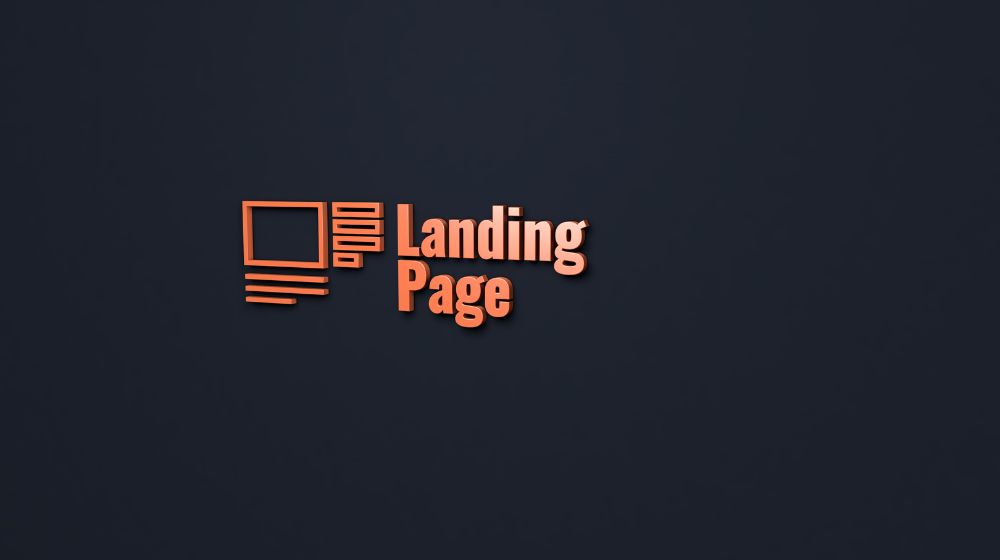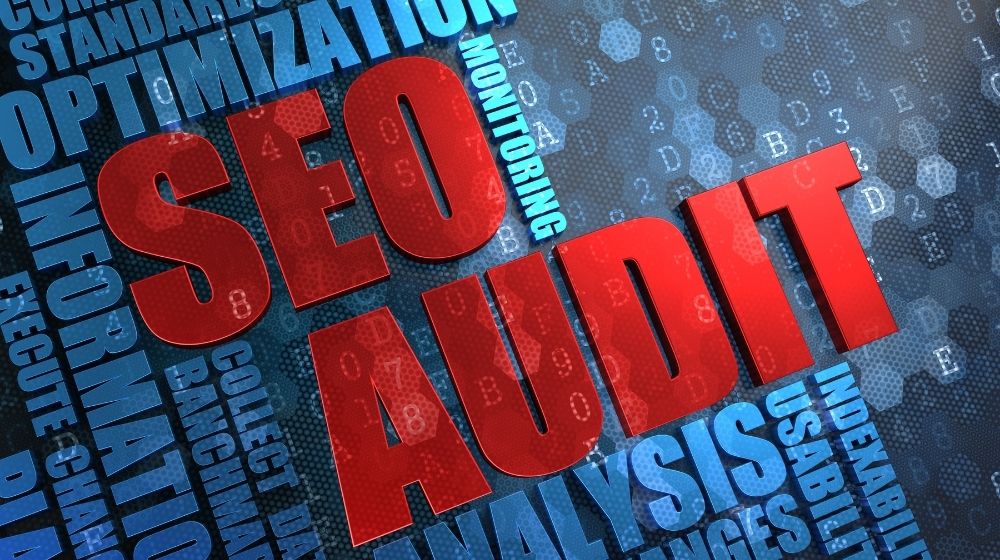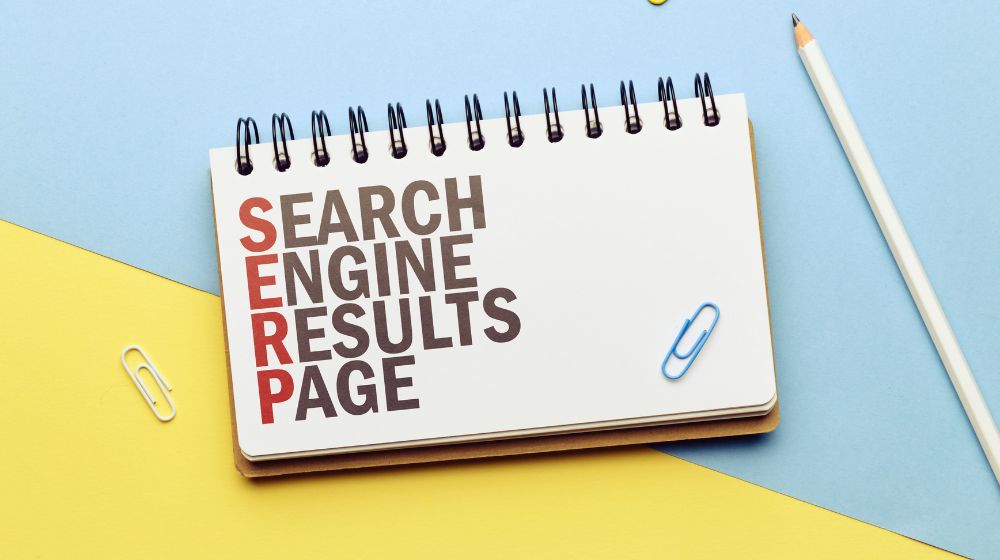When it comes to digital marketing, landing pages are one of the most important tools in your arsenal. A well-designed landing page can help you increase sales, signups, and leads.
In this blog post, we will take a look at the anatomy of a landing page and the six landing page components. We will also discuss landing page copywriting best practices to help you create high-converting pages.
[lwptoc]
Landing Page Copy: Anatomy of a Landing Page Great Copy
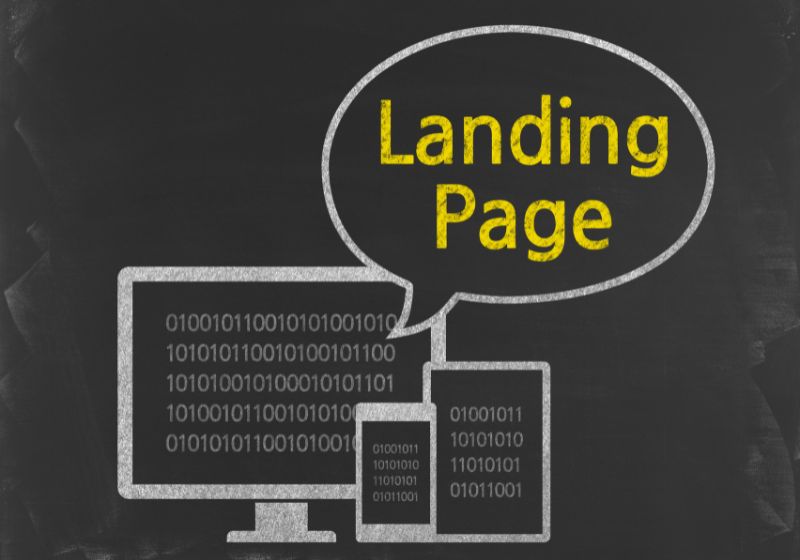
If you’re new to online marketing, a landing page is a standalone web page designed for a specific purpose. The purpose of a landing page can be anything from promoting a product or service to capturing leads for your sales team.
Your landing page is the single most important part of your sales funnel. If you double your conversion rate, you double your leads, and yes, double your business.
So, here are my six copy components of a landing page that converts. In this blog post, I’m revealing the six key components I include in every landing page I write to convert visitors into leads like crazy.
These components are especially relevant to what today’s customers demand — high value, more transparency, and zero fluff. So whether you’re a freelance writer working with clients or writing your copy, you should use different landing pages for every one of your marketing campaigns and traffic sources. It’s how you build your list, which is the most valuable asset you can have as an online entrepreneur.
What Is a Landing Page
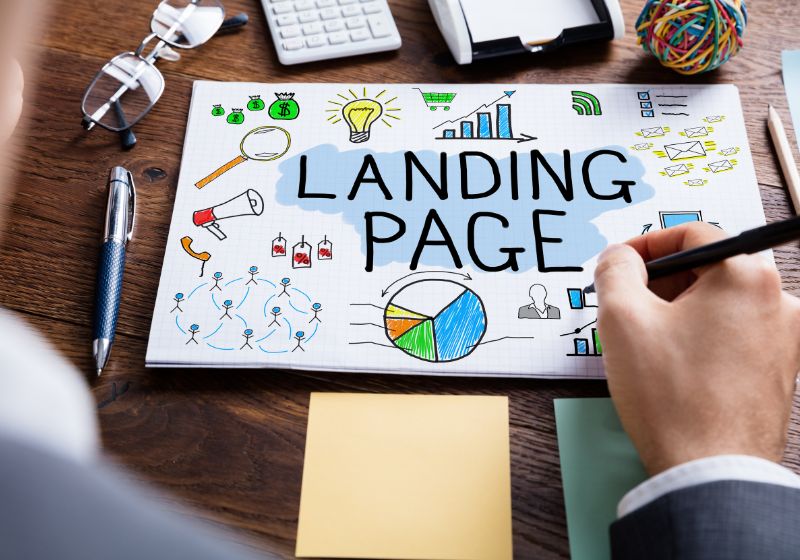
Your landing page’s purpose is to give your visitors something for free that demonstrates the quality of what your business offers in exchange for their information – typically a user’s email address, which you can collect through a lead-capture form. But you might also be asking for their phone number or permission to contact them over Facebook Messenger. Whatever your desired outcome, the goal is to create a list of engaged subscribers, nurture a high-value relationship and convert the right prospects into customers through your marketing.
Landing Page vs. Home Page
Now it’s no secret that businesses capture leads at a higher rate by sending prospects to highly-targeted and relevant landing pages rather than their home page. Now those are two very, very different marketing tools.
A homepage is what I like to call your “PR Site.” Unlike landing and sales pages, a homepage is not primarily for conversion. Instead, it features your brand, tells your story, and builds trust and credibility. It is how people learn more about you and your business, which is great for cold organic traffic.
On the other hand, landing pages have one purpose—building your list around a singular benefit or solution. They are used for conversions and are built for direct, paid, or endorsed affiliate traffic to capture a visitor’s information.
How To Write Landing Page Copy
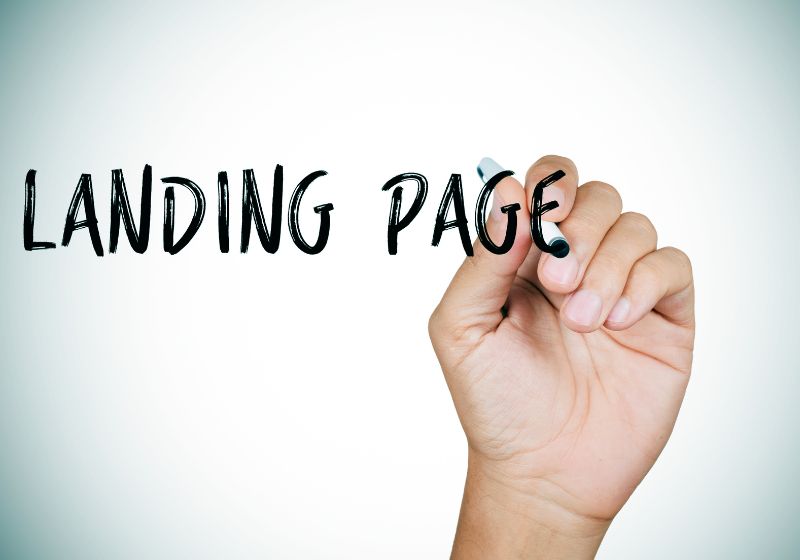
6 Must-Have Landing Page Components for an Effective Landing Page That Converts
These are my six must-have copy components for a landing page that converts.
Landing Page Copy Component #1: A Free High-value Promise
Give what you would want to receive. It is that simple! Your landing page gives your brand a one-shot opportunity to demonstrate the value of your product or service and earn your prospect’s trust from day 1.
The copy needs to convey a clear and single benefit that your visitor can expect after consuming whatever free content you’re giving away – and it needs to be good but not hype-y or unbelievable.
Audiences now are getting savvier and savvier. What used to seem like a no-brainer sharing their email address has become a heavily-weighted decision. Audiences now know why you want it and what you plan to do with it. In addition, there is a TON of valuable content available for free, which means your leads expect some good stuff if they are willing to give you their email address.
The number one question on everyone’s mind is, “What is in it for me?”
So, make it worthwhile and offer them something of HIGH value. High-value means something your prospects would consider spending money on, not some arbitrary price tag value that you scratch out with the word free.
And lastly, be sure to DELIVER on your promise immediately. Make sure whatever you provide in exchange for an email address offers insanely great value upfront.
Even though you’re offering free, it should deliver results. It would be best if you were giving away your BEST stuff for free. It’s how you turn your leads into raving fans and lifelong customers. It’s the law of reciprocity at its finest.
Landing Page Copy Component #2: A Strong Reason Why
Even when offering your visitors something for free, you must address that inner critic. They want to know why you’re giving it away and why they should take action right now. So once you build up the value of what you’re offering, the next question you want to answer in your prospects’ minds is, “Okay, if this is so valuable, why are you giving it away for free?”
And the simple answer is usually the best one.
- “I want you to experience my work, because I know once you do, you’ll be hooked and you might even buy something from me”…
- “the feedback I receive about this gift is so positive that I wanted as many people as possible to be able to get these results. Because I know once you do, you’ll stick with me for life”…
Businesses often overlook justifying an offer – a key component in online marketing. However, an authentic reason for a discount or freebie helps build trust and rapport with your audience.
Landing Page Copy Component #3: Reason why they need to act right now.
This landing page copy part is where you can play with good ol’ scarcity. Scarcity is one of the most effective techniques for increasing your conversions.
For example, maybe:
Your giveaway is only available for a limited time or while it’s in stock.
Or you could offer a bonus gift or upgrade to the first 100 leads that opt-in.
If you’re offering a product or service as part of a real-time campaign, you could weave in some time scarcity into your copy with something like “this offer is only available for the next three days.”
Whatever it is – include an authentic reason why you’re limiting the offer.
And the first rule of using scarcity is to ensure it’s true.
Scarcity
Scarcity is a powerful way to persuade, but it’s a technique that has been around for a long time, which means customers are tired of anything that smells phony. The last thing you want to do is to lose your audience’s trust and make them feel betrayed by your false sense of urgency!
So, if you are writing a completely evergreen landing page where there is no scarcity, don’t make it up. Instead, rely on one of the other powerful copy components like Authentic Social Proof.
Authentic Social Proof
I do this, and you do this, everyone does this — we rely on social cues from others on what to think, feel, and do in many situations. And not just anyone, but the people and sources we relate to or who we feel are similar to us.
Social proof allays any fears or doubts your visitors have about committing to your offer and builds authority for your brand. It’s also an authentic way to get your prospects to know you because it’s so much better to have other people toot your own horn than yourself saying how great you are.
Landing pages are one of the first touch points with your prospects. So, having social proof allows them to establish a positive association with you and your brand, which increases the chances of them returning — even if they don’t opt-in that moment. So be sure to show your visitors how others have benefited from your product, service, or content.
Gather your best user testimonials and feature them on your landing page with permission.
Another way to use social proof is to showcase the size of your social following, feature recent comments from your followers, or include screenshots of positive reviews that have slid into your DMs.
Also, if you’ve received any press coverage, you can include an “As Seen On” logo panel or screenshots which you can link directly to an article or story.
Communicate social proof throughout your landing page before presenting the offer or call to action. And Remember: use only real social proof!
Landing Page Copy Component #3: Trust Factors
I have seen many landing pages that focus so much on the design that they forget to build trust first with their visitor. So write your copy, design a landing page to support your copy, and strategically work on social proof and trust factors.
Some of these factors include a privacy promise on your opt-in form, a clear statement on how you’ll use your prospect’s email address and what they can expect to receive from you, and a reminder that there can unsubscribe or cancel at any time.
And, add in anything you can to let your visitors know that you’ve taken the measures to secure your landing page and that it’s completely safe for them to visit, like:
using a secure domain or
adding a third-party trust seal to your Site, such as McAfee Secure and Trusted Site.
Landing Page Copy Component #5: A crystal clear CTA.
Studies have shown that you only have 5-10 seconds to convince your visitors to stay on your page before they bounce. So it would be best if you clarified your offer and how they can get it in the simplest possible way.
Your call to action needs to be front and center, leaving no room for confusion on where your prospect should click next. So keep your CTAs easy to spot and use.
And if your landing page features a quiz or some other form of multi-step interaction — break that process into smaller steps.
According to Robert Cialdini in his book Influence, having your leads make a series of micro-commitments will increase their likelihood of conversion based on the principle of Commitment and Consistency.
So, for example, rather than have your opt-in form directly on the Site, try having a simple CTA button with a clear CTA. Clicking that Call to Action button will be your prospect’s first micro-commitment.
The resulting pop-up will then either ask for an option or take them to the first question in a quiz, with each step serving as yet another micro-commitment until ultimately asking for the email address.
Now, I encourage you to look for other unique ways you can employ the principle of Commitment and Consistency in your marketing. And remember, the more clicks they make, the more likely they are to opt-in and buy. And if you haven’t read Influence yet— it’s one of my top 5 favorite books that I recommend if you’re looking to get into the copywriting business.
And we are moving on to the last component, brand consistency.
Landing Page Copy Component #6: Brand Consistency
Brand Consistency is one of the biggest blindspots in marketing, and you’d be amazed by how many copywriters and businesses fail to do this! Yet, brand consistency is critical to locking down a prospect long-term. The market is becoming increasingly cautious and intolerant of any inconsistencies in your promises and the languaging you use.
And it often happens, especially when there isn’t a clear brand voice communicating between the team members in charge of your different marketing channels and campaigns.
If there’s a disconnect between what your ad, email, or content piece promises and what your landing page delivers — you might as well have a broken website because they are Xing out immediately. And worst of all, you’ll lose any chance of converting that visitor into a customer.
There must be unity and overlap in messaging across all your marketing touch points leading up to your landing page and the promise you then deliver.
And the same rule applies to the rest of your pages, social media accounts, and customer service. So make sure your brand has a distinct and impactful voice that you can consistently communicate across the board.
There you have it – the six components of a landing page that converts. This may seem like a lot for a short landing page – but keep in mind that you can check off many of these components on the list with just a few short words. So like any copy, it’s important to be concise and 100% clear on WHAT you offer.
Like the famous Albert Einstein once said, if you can’t explain it, you don’t understand it well enough.
And if you don’t understand it, your audience won’t understand it.
Up Next:
Copywriting Tutorial on How To Write Sales Copy That Sells
My five favorite copywriting books.
A well-designed landing page will have six key components:
- A headline that captures attention
- A subheading that elaborates on the headline
- A strong call-to-action (CTA)
- Supporting images or videos
- Testimonials or customer reviews
- A form to capture leads
Let’s take a closer look at each of these components:
Page Headlines
First, the headline is perhaps the most important element on your landing page. It’s the first thing visitors will see when they land on your page, so it’s important to make sure that it’s attention-grabbing and relevant to your offer.
Subheading
Your subheading should elaborate on the headline and give visitors a better idea of what they can expect from your landing page.
CTA
Your CTA should be clear and concise. It should tell visitors what you want them to do, such as “Sign up for our newsletter” or “Buy now.”
Use supporting images or videos to help reinforce your offer and improve your conversion rate.
Customer testimonials and reviews are also effective in building trust and credibility.
Finally, you will need a form to capture leads. This form is where visitors will enter their contact information so you can follow up with them later.
Landing Page Copy Best Practices
Now that we’ve covered the basics of landing page design let’s look at some best practices for copywriting.
- When writing your headline, keep it short and to the point. Use strong keywords that are relevant to your offer.
- Your subheading should briefly explain what visitors can expect from your landing page. But, again, use strong keywords and avoid ambiguity.
- Your CTA should be clear and actionable. Use persuasive language that urges visitors to take action.
- In your supporting copy, please focus on the benefits of your offer and your unique selling proposition or what makes it unique. Again, use strong language that speaks to your target audience’s needs and desires.
- Finally, ensure that your form is short and easy to fill out. Ask for only the essential information you need to follow up with leads.
By following these best practices, you can create high-converting landing pages to help you achieve your online marketing goals. So start designing your landing pages today!
Do you have any questions about landing page design or copywriting? And be sure to check out our other blog posts for more tips on online marketing.
